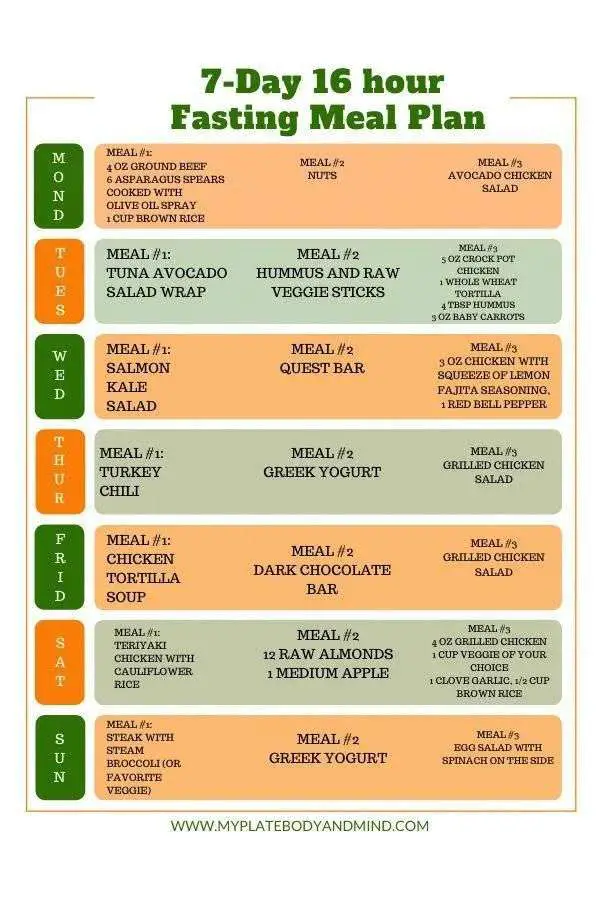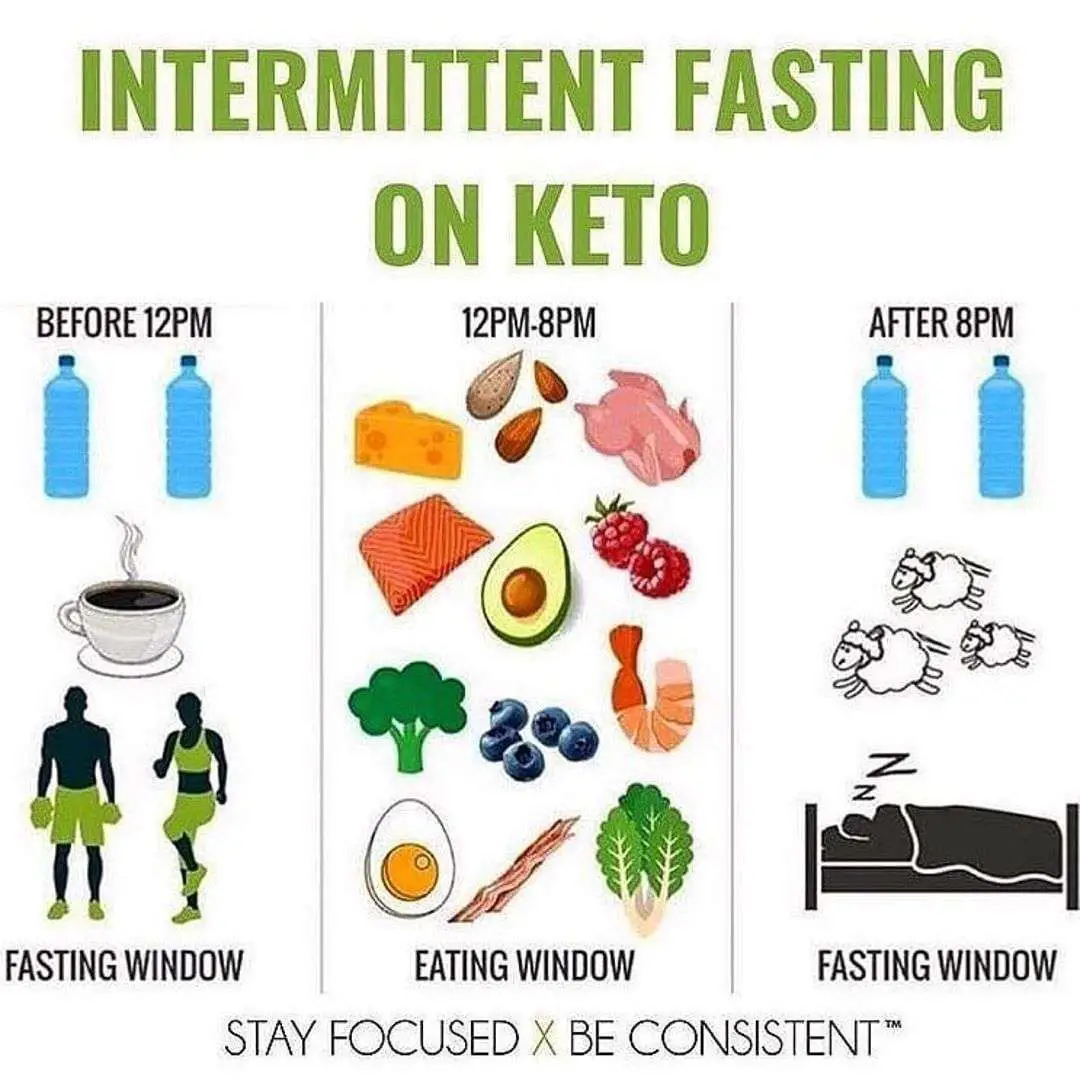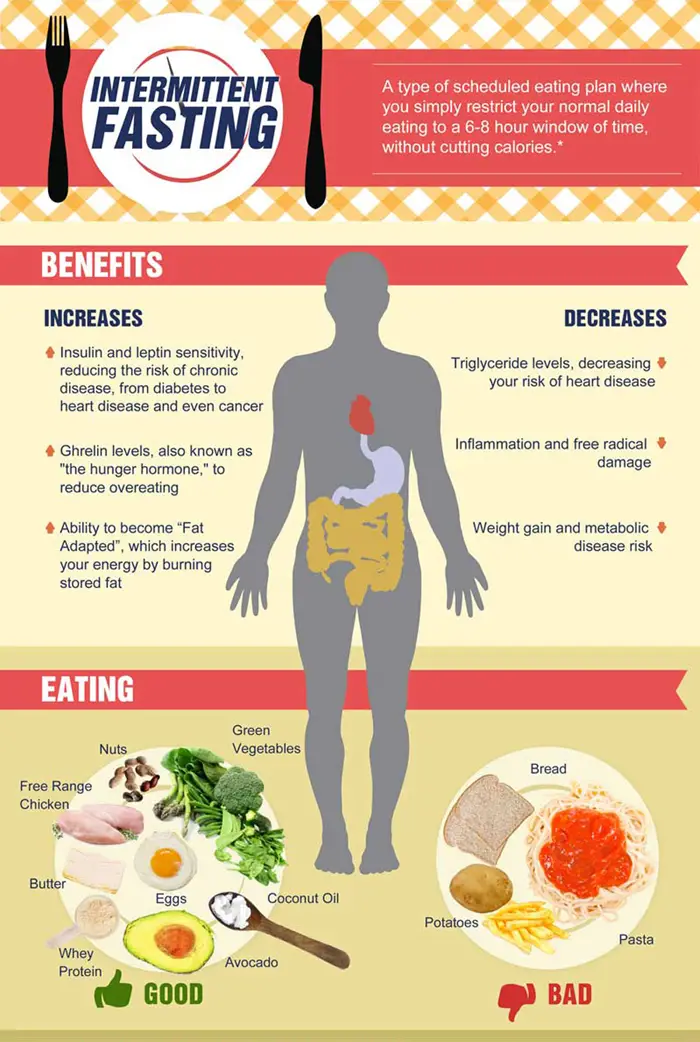Should You Be Worried About Refeeding Syndrome
Some legitimate health complications can arise when you fast or are malnourished for longer than 5 days. One of these complications is called refeeding syndrome, which is caused by potentially fatal shifts in fluid and electrolyte balance that can happen when we eat after a period of undernourishment.
This happens because the concentration of fluids and minerals in our body relies heavily on what we eat. Low carbohydrate diets, like the ketogenic diet, increase the excretion of vital minerals like sodium and potassium.
If you add a prolonged fast onto the ketogenic diet, you can lose an unhealthy amount of these essential minerals.
Fasts that are shorter than 5 days, however, arent likely to cause issues especially if you break your fast with a low carbohydrate meal that is filled with mineral rich foods. A meal with dark leafy greens, avocado, and salmon with some unrefined salt would be an ideal way to break a longer fast.
During a shorter fast that lasts less than 24 hours, however, you wont have to worry about refeeding syndrome at all. Either way, it may be best to check out the mineral supplements that we recommend in this article to ensure proper mineral balance.
But what about muscle? Its only common sense that consuming no protein and less calories will lead to an unhealthy amount of muscle loss. Thats right it is only common sense.
Tips For Breaking A Longer Fast On Keto
If fasting for longer than 24 hours, its important to slowly reintroduce nutrients into your body. You dont want to load your digestive system with too much after going more than a day without eating.
So whats the best way to break a longer fast on keto?
Start with simple foods that your body can easily digest. If you know a particular food gives you trouble, its best to avoid it at this time. Instead, go for lighter options like veggies, lean proteins, broths, and soups that wont be difficult on your digestive system.
More Diet Tips From Bulletproof
Keto Guide To Intermittent Fasting
Updated Oct 4th, 2021 Written by Craig Clarke
Intermittent fasting has become an immensely popular dieting strategy. Although it may seem like another diet fad, there are several reasons why skipping meals can be so helpful for many of us.
The first is that intermittent fasting can help you bust through weight loss plateaus. Down to those last couple of pounds, or been stuck at the same number for weeks? Give this a try.
The other reasons are for the sheer health benefits of fasting. Better metabolic adaptions, improved muscle growth and synthesis, and improved responses to post workout meals when you work out. Even longer life spans have been shown in worms yeah, I know its only worms, but still!
Its also shown to boost mental clarity and give more focus during the day.
And this is just a brief overview of what the research on fasting has found. For an in-depth look at the benefits of intermittent fasting, you can head over to the more scientific post I did on it over here.
On the other hand, If you are looking for a meal plan, shopping list, and other practical strategies thatll help you experience the benefits of the keto diet and fasting at the same time, continue reading below.
Recommended Reading: How To Keto Diet And Intermittent Fasting
What Exactly Is The Keto Diet Anyway
The ketogenic diet is a macronutrient-restrictive pattern of eating where the majority of the calories you eat come from fat, while the rest comes from a moderate amount of protein and little to no carbs. For the most part, this means saying goodbye to fruit and pasta, and hello to steak and eggs.
This high-fat, low-carb diet encourages the body to use fat for energy instead of sugars. When your body does not have enough carbs to sustain everyday activity, the liver breaks down fat into ketones, which can then be used as energy. This metabolic process is called ketosis that’s where the phrase “going keto” comes from.
Studies have shown that the keto diet can have many health benefits. It’s been proven to increase weight loss, improve brain function, and reduce blood sugar levels. It has helped many people who have suffered from obesity and diabetes. However, eating in this way can be extremely challenging.
“People don’t usually fashion their plate around fat,” says Kristen Mancinelli, MS, RDN, author of The Ketogenic Diet. “I mean, you really eat 25 grams of carbohydrates a day, mostly coming from non-starchy vegetables like broccoli or lettuce. It’s sort of hard to grasp because it’s not what we’re used to.”
Anything High In Carbs

All high- to moderate-carb foods are off-limits on the keto diet. This includes healthy carbs like sweet potatoes, winter squash, legumes, and whole grains. Processed foods are also out. This list isnt comprehensive, but it should give you an idea of what to avoid: All grains: quinoa, millet, wheat, rye, spelt, rice, corn, amaranth, what berries, etc. Beans and lentilsAll pasta All bread Chips and crackers Winter squash: acorn, butternut, delicata. All sweets: ice cream, cookies, cake, brownies, candy, etc.The good news is that there are tons of recipes online that can help you feel like youre eating these foods by using creative substitutions that remain keto-friendly.
Also Check: Can I Drink Coffee While Fasting
Intermittent Fasting And Ketosis
One of the best things about fasting is that it can help you get into ketosis faster.
The two are related for a few reasons:
So, is intermittent fasting 16/8 guaranteed to get you into ketosis? No, but it can help get you there if you do it along with a keto diet.
What To Eat During Intermittent Fasting: A Full Guide
Quick Navigation
intermittent fasting | what to eat | foods to avoid
Intermittent fasting is all about when to eat and not what to eat. But does that mean you can binge on ice cream, chocolates, and chips? Certainly not If, during intermittent fasting, what to eat is your biggest concern, you are at the right place. This article will discuss intermittent fasting and how the right food choice can help you reap more benefits from this diet regime.
While practicing intermittent fasting, planning a balanced meal is essential to maintain optimal health. During your periods of fasting, making healthy food choices to meet your daily nutritional requirements is vital. You need to focus more on eating protein-rich foods, low-carb food from whole grains, and healthy fats.
Recommended Reading: What Can You Drink While Fasting
Reduces Your Appetite By Making Fasting Easier
Replacement of carbohydrates with fat on a keto diet may lead to a reduction in hunger, possibly owing to changes in appetite-regulating hormones. If your hunger is lower than usual after youve become fat-adapted on the keto diet and your body is burning fat for energy, youll find intermittent fasting easier.
Intermittent Fasting And Muscle
Two ground-breaking studies have recently been published on the effects of intermittent fasting on males. One group of researchers studied the effects that 16 hours of intermittent fasting had on males that lift weights. They found that muscle mass stayed the same, fat mass decreased significantly, and the males who fasted for 16 hours a day burned more fat for fuel compared to the control group that only fasted for 12 hours.
Another study showed that combining 20 hours of fasting with resistance training resulted in an increase in muscle mass, strength, and endurance, and this was achieved by eating ~650 calories per day less than normal.
The benefits of intermittent fasting translate to untrained overweight and obese individuals as well. One study published in Obesity Reviews found that eating fewer calories is effective for fat loss, but it does come with some muscle loss. However, if the subjects fasted for 24 hours and ate as much as they wanted on the next day for a period of 12 weeks, they lost significantly less muscle mass.
Yes you read that correctly 24 hours of intermittent fasting without any resistance training and these subjects were able to preserve more muscle mass than the subjects that ate fewer calories every day without fasting at all. This finding contradicts our common sense, but when we dig deeper into autophagy we can find the mechanism behind this result.
Don’t Miss: What To Do When Fasting For God
Who Should Not Fast
Wondering how long is it safe to fast? Stop right there. Some people should not fast at all. First and foremost, always talk to your doctor before engaging in the practice of fasting. Its important to discuss any preexisting health conditions you may have that could be affected by reducing your eating window.
While fasting may provide benefits to some, it is not for everyone.
If you are pregnant, breastfeeding, elderly, have a history of disordered eating or have a chronic health condition, such as type 2 diabetes or heart disease or high cholesterol, consult with your health provider, and discuss supervised fasting before introducing either IF or longer fasts into your life.
More Diet Tips From Bulletproof
Is Fasting For Everyone
Definitely not. If any of the following resonate with you, get the opinion of a qualified health practitioner before you play around with fasting.
- Pregnant or breastfeeding women
- Those with an HPA Axis Dysregulation or a high-stress lifestyle
- Those with eating disorders or a history of eating disorders
- Those with hypothyroidism
- Those with hypoglycemia
- Under 18 years old
Fasting also isnt necessary on heavy workout days or if youre a hardcore athlete.
Read Also: Does A1c Test Require Fasting
Eat A Balance Of Fruits Lean Protein Healthy Fats Smart Carbs And Vegetables
Getting a little bit of everything on a keto diet is crucial to your health, as each macro has its part to play in the body.
Fruits like pears make a great addition to your keto diet when on an intermittent fast. Healthy unsaturated fats like extra virgin olive oil and carbs such as avocados are a must-add to a keto meal.
Throw in some vegetables, like cauliflower or kale, and you are good to go.
Benefits Of Combining Intermittent Fasting And Keto

As you can see from above, intermittent fasting and keto share a number of benefits like improved fat burning, better cellular repair, improved insulin sensitivity, and lower risk of disease.
Now lets explore some of the ways that combining IF and keto may increase these benefits and offers others.
Read Also: What Is Water Fasting In Keto
How Many Hours Should You Intermittent Fast On Keto
It depends on your goals, schedule, and lifestyle. However, most people who are doing keto and intermittent fasting will fast for 16 hours and eat within an eight-hour window . This is a good starting point for most people. You can adjust the fasting periods as needed to suit your goals and lifestyle.
Putting It All Together
Now you know that there is nothing to fear when it comes to intermittent fasting. Although you will feel hungry at first, your body will adjust by activating autophagy and burning more fat and ketones for fuel.
Ketogenic diet researchers suggest a longer intermittent fast followed by shorter daily intermittent fasts. You can use a fasting protocol that includes fasting for up to 3 days, 3 times a year with a shorter 16 to 20 hour fast on the days before and after the 3-day fasts.
Whether you are fasting for 16 hours or 3 days, it is important to monitor your mineral levels to avoid symptoms of refeeding syndrome.
Supplementing with sodium from unrefined salt and potassium, phosphate, and magnesium from mineral-rich foods and supplements may be necessary for you to avoid excess mineral loss caused by ketogenic diets and fasting.
You May Like: What Are The Benefits Of Fasting For 16 Hours
Whats Next Intermittent Fasting & Keto After The Meal Plan
After youve tried our meal plan, take a moment to assess how it went.
- How did you feel while you were fasting? Were you struggling to make it to your next meal while fantasizing about food or were you able to stay focused throughout the day?
- Does intermittent fasting fit with your schedule and lifestyle better than eating meals throughout the day?
- Is an intermittent fasting schedule a better strategy for you to sustain weight loss than what you were doing before?
Your answers to these questions will provide you with enough info to determine whether or not intermittent fasting is a good dietary strategy for you.
Some people just cant put up with fasting and need to have evenly spaced meals throughout the day, while others experience more energy and focus when they dont have breakfast.
Some keto dieters are able to get incredible results when they use intermittent fasting while others feel worse and dont experience much of a benefit at all.
If you think that intermittent fasting isnt right for you, then theres no need to force it. Just by maintaining a calorie deficit and following the keto diet, you can experience most of the benefits that you would get from intermittent fasting anyway. Follow whatever meal schedule works best for you, and use the principles in our How to Lose Weight on the Keto Diet article to guide you in the right direction.
Who Can Benefit From The Ketogenic Diet
The keto diet is best for people who want to lose weight and dont want to spend hours in the gym or doing physical exercise and People who are not very inclined to fasting.
Not only for weight loss, but ketogenic diets are also excellent forpeople with epilepsy, diabetes, heart disease, cancer, Alzheimers disease, and who are pretty much anyone who deals with insulin resistance or diabetes issues because it emphasizes moving away from sugars and carbohydrates toward fats.
The ketogenic diet is also beneficial for athletes because it helps them build muscle by converting what they eat into energy instead of storing it as fat.
Also Check: Can I Take Supplements While Fasting
What Is The Ketogenic Diet
The ketogenic diet consists in keeping carbohydrate intake very low. This means no sugar, no grains, and no refined carbs such as pasta and rice. On a keto diet you consume adequate protein, some fat, low-carb nuts and seeds, and non starchy vegetables and leafy greens.
For people wanting to lose weight and/or treat their type-2 diabetes, this diet is already a go-to. Limiting your carb intake forces your body to use fat for energy, which eventually normalizes blood sugar and increases sensitivity to insulin.
One Meal A Day Fasting
As the name implies, one meal a day fasting means you have to pick one between breakfast, lunch, and dinner. Throughout fasting periods, you can, of course, have water and other zero-calorie drinks like unsweetened plain coffee and black tea.
One meal a day fasting has several health benefits, such as reducing heart disease risk factors and reducing blood sugar levels. It is the caloric deficit caused by having just one meal that drives weight loss in this instance.
OMAD has been regarded as being extreme and not suitable for beginners. Some variations of this fasting schedule allow for the addition of a light snack or two during fasting windows.
In OMAD, whichever meal you choose to consume is entirely dependent on you.
Read Also: How Quickly Can I Lose Weight Fasting
How To Get Started
Intermittent fasting doesnt have to be difficult. In fact, it shouldnt be difficult at all!
All you have to do is allow more time between your meals. This can be as simple as stopping dinner at 7pm and not eating anything until 7am. That is a 12-hour fast. While a 12-hour fast hasnt been studied in experimental trials, it logically seems like the first place to start with time-restricted eating stop the after-dinner snacks.
The most common fasting or time-restricted eating regimens are as follows:
- 16:8. This means fasting for 16 hours and eating for 8 hours. For example, finish dinner at 7pm and have your first meal the next day at 11am. There are many other variations of this such as 14:10, 18:6, and 20:4.
- OMAD: This stands for one meal a day. As it sounds, this simply means eating only one meal for the entire day with no snacking. You can learn more about OMAD in our dedicated guide, What you need to know about OMAD.
- Alternate-Day Fasting : Finish dinner at 7pm Monday, dont eat anything all day Tuesday, and have your first meal at breakfast or lunch on Wednesday. Thats an alternate-day fast. Read more about ADF here.
- 5:2. Eat normally for five days during the weak and fast or eat very low calories two days of the week. The two days do not have to be consecutive days.
The Benefits Of Longer Fasts

Fasting comes in many different forms. Some people go 16 hours without eating before they consume anything. Others may undergo complete calorie restriction for days at a time!
Along with entering ketosis, during the first 24 hours of fasting, your body can undergo some significant changes. For example, gluconeogenesis is stimulated during fasting, which increases the number of calories your body burns.
Moreover, a 48-hour fast may ramp things up further by helping to improve insulin sensitivity while also boosting the autophagic process.
How long is it safe to fast if you want to explore this tactic for several days? Longer fasts may introduce even more health benefits, especially when it comes to ketone production and reducing blood glucose levels. The 2019 study cited above even showed that subjects experienced an increase in physical and emotional well-being by engaging in prolonged fasting.
Read Also: What To Eat And Drink During Intermittent Fasting
